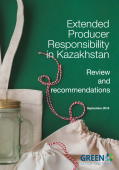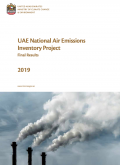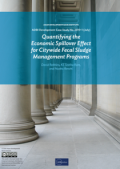Projections estimate that between 2000 and 2050, the world population will grow 50 percent and global energy and materials use will grow 300 percent. Therefore, the strategic importance of materials is causing many people to look carefully at all aspects of the material lifecycles that comprise our industrial practices and consumer habits.
This report discusses materials management—how best to provide for human needs and prosperity while using fewer materials, reducing toxic products, and recovering more of the materials used. It includes background information on material usage within the United States, describes challenges related to sustainability and environmental impacts, and provides an analytic framework for materials management. The report also provides three key recommendations for achieving sustainable materials management:
While plastic pollution is a global problem, around 60 percent of marine plastic debris enters the ocean from just five countries: China, Indonesia, Thailand, Vietnam, and the Philippines. This report focuses on the challenge of managing plastic packaging waste in Southeast Asia and China. In addition to showing the scale of the challenge, the report gives an idea of the funds that could be raised if these countries introduced extended producer responsibility (EPR) schemes, under which companies that place plastic packaging on the market cover the costs of its proper management—from collection and sorting to recycling and disposal.

This report analyses the current legal framework and operational set-up for Extended Producer Responsibility (EPR) in Kazakhstan and makes recommendations for strengthening and improving the current system further.

This report presents the results from Phase II of the Air Emissions Inventory Project. It is the first national air pollutant emission inventory carried out for the whole country. The emissions inventory shows that emissions from the stationary energy and transport sectors dominate the emission sources. For particulate matter, the dominant source is industrial processes and product use (IPPU). Although the agriculture and waste sectors have a minor contribution to the country’s overall emissions, their role is more significant in terms of greenhouse gas emissions. However, of particular note are the estimated high non-methane volatile organic compounds (NMVOCs) emissions from municipal solid waste disposal on land.

This report introduces a model describing the full financial realities of fecal sludge management (FSM) projects; a methodology for quantifying the costs, direct effects, and economic spillover effects; and a toolkit to calculate their net present values and the overall program’s internal rates of return. This is demonstrated in the report through two citywide FSM programs in the Philippines. In both programs, economic spillover effects include improved tax revenues, property values, and health outcomes, and the present values of the direct effects and economic spillover effects exceed the original capital expenditure. This implies that when the policy makers set user charges to cover the recurrent costs such as operation and periodic maintenance, the FSM programs would be sustainable.
